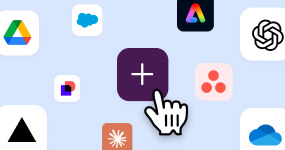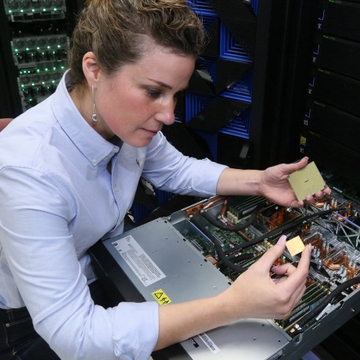A campervan holiday can be a real adventure and, for many people, traveling from one place to another instead of being tied to one location is the perfect way of enjoying time off. Thanks to Yescapa and Goboony, this method of exploring the world and taking charge of travel plans has become more accessible than ever.
Since French Yescapa merged with Dutch Goboony, it has become a leading platform for peer-to-peer campervan and motorhome sharing, connecting travelers with private owners across Europe. However, bringing two companies together came with its challenges.
Aligning teams, technologies, languages, and company cultures required seamless integration at every level. After all, in an online market, customer trust and operational efficiency are critical. To avoid veering off the road, the two companies relied on Slack as their main communication tool as well as the platform to combine workspaces, people, and teams.

We couldn’t afford any downtime in Slack. It is our productivity platform.
Merging two lanes into one
Slack was the natural choice for the new business since both companies had already used it for some time. However, they differed in their naming conventions, integrations, workflows, and importantly, their language. Staff at Yescapa communicated in French while Goboony preferred English.
“We had two businesses with different cultures and languages,” says Adrien Pinson, Co-Founder and Chief Technology Officer at Yescapa. “Both are international companies with people of multiple nationalities working remotely or from an office. So, Slack became the obvious space for communication and the exchange of ideas. It’s really evolved into an essential work tool for us.”
Salesforce supported Yescapa and Goboony through the merger, including a month of extensive planning and testing to prevent downtime. “We couldn’t afford any downtime in Slack. It is our productivity platform,” Pinson explains. The transition happened over one weekend. By Monday morning, the new workspace was fully operational.
Great feedback from employees proved that the merger was successful and finally allowed people to contact anyone in either business. There were common spaces for each team and spaces for combined teams, as well as ways of preserving cultural elements. For example, employees could recreate their old customized emojis, which had become a key for employees to express themselves, to add to the budding new company culture. But this was only the first step.
Navigating the road with the right map
English was chosen as the common language, which caused some initial challenges because not everyone was fluent. “Slack’s automatic translation feature was a real asset for the team,” says Pinson. “It allowed people to translate messages in channels and translate their responses back. Communicating in real time is more difficult, so this capability allowed everyone to acclimate to English in a controlled and asynchronous environment.”
To guide collaboration and continue merging the teams, the company came up with a specific naming convention for its channels. A simple prefix, either YC or GB, before a channel name specified the company from which it originated. Over time, as separate instances merged, there were fewer and fewer prefixes, creating truly combined spaces.
With Slack previously in place at both companies, employees were already comfortable using the tool. The combined business relies a lot on integrations such as Google Workspace and Google Calendar. “It’s very practical,” Pinson says. “We know when people are in meetings and won’t be able to reply to messages as quickly as usual, for example, and it connects files from the Drive, allowing easy previews.”
Tableau is another great integration previously utilized by Goboony. Now, it’s a common tool allowing teams to easily see their objectives and results directly in Slack. This is supported by a dedicated #daily-reports channel with the businesses’ main KPIs helping align the team on company targets, disseminating a data-driven culture. Everyone now has instant access to stats and knowledge important to their work.
And when it comes to sharing knowledge that helps run projects, the company also relies on Notion. “It’s our knowledge base for the entire company,” says Pinson. “It’s where we have our operational procedures and projects, and it allows us to follow our roadmap.” Additionally, an automated message is delivered at the end of each week outlining everything that’s been delivered by tech and product teams, how each project is doing, and what the next steps are. Everyone is in the loop.
Slack’s automatic translation feature was a real asset for the team. It allowed everyone to acclimatize to English in a controlled and asynchronous environment.
Keeping the engine running
Sharing knowledge is vital, but it doesn’t just involve common channels and a repository of information. It’s also about communicating issues in real time, which allows specialists to immediately address them. To help achieve this, the company’s IT department uses the Jira integration.
“The technical team uses it for everything that requires an IT ticket, from bugs and technical issues to feature development,” explains Pinson.
There is also a dedicated channel where anyone can report bugs and other issues to the technical team, who then directly create a Jira ticket from the channel. This not only saves time and effort but also offers employees a clear view of the status of their ticket, with updates automatically in the channel.
Planning for the journey ahead
The combined Yescapa and Goboony team has achieved a lot in a short time. Merging two cultures and separate working environments with different languages would be a tough challenge for anyone. But both companies planned well, relied on the right support, and prepared thoroughly before taking the plunge. And they were already using the perfect tool to achieve their goal.
The journey is not over. With their eyes firmly on the road ahead, the employees have been experimenting with various AI capabilities to understand how their customers and the business can benefit.
As a result of testing its limits, strengths, and possible challenges, the company is now ready to implement AI within its work environment. It will be able to, for example, recap years’ worth of conversations prior to the merger and facilitate onboarding with summaries of current and former projects. “It could be super powerful,” says Pinson. “Our next challenge is to deploy AI within Slack. We can build our own solution, but Slack AI seems to be the more straightforward option.”















